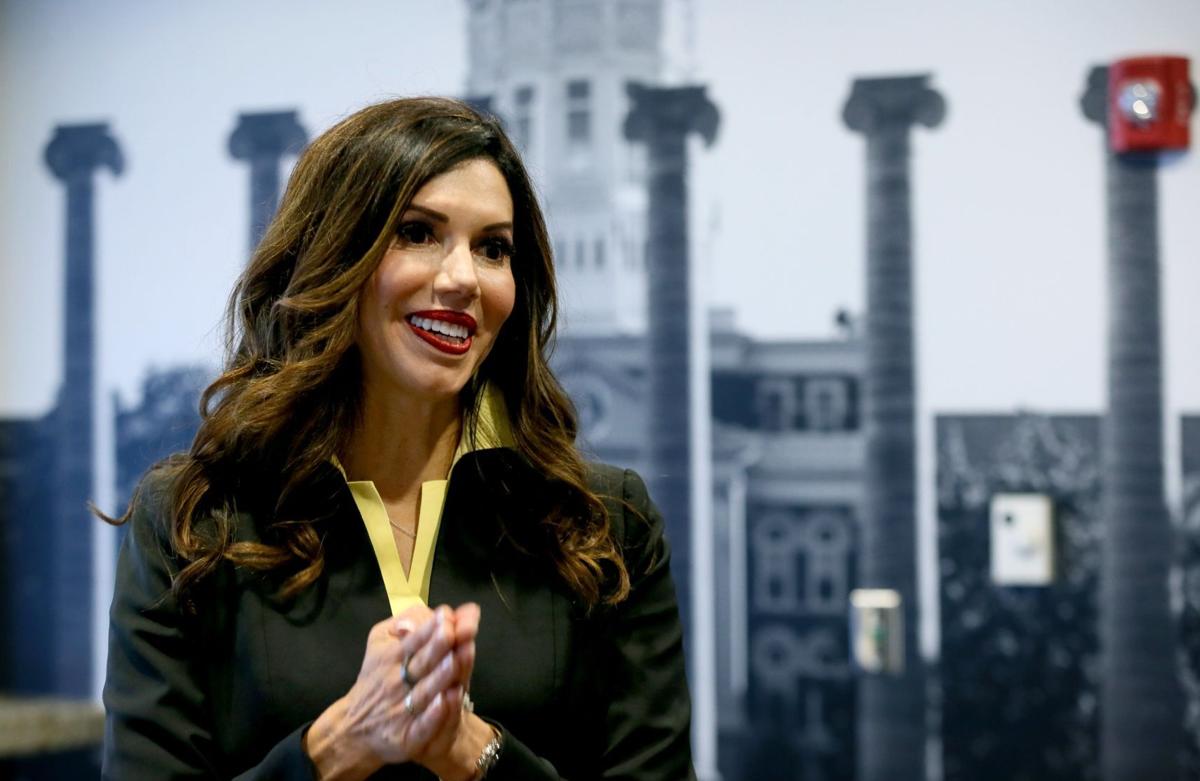Americans united and sacrificed during World War I and World War II not only by going to war across the oceans as a soldier, medic, nurse or cook, but in so many others ways right here in the United States.
|
Weaved into the fabric of America is sacrificing for the common good to preserve and advance our collective freedom.
Americans united and sacrificed during World War I and World War II not only by going to war across the oceans as a soldier, medic, nurse or cook, but in so many others ways right here in the United States. Last week the University of Missouri named Desiree Reed-Francois the first female athletic director in its history. That also made her the first female athletic director at any public university in the SEC. She is only the sixth female athletic director among the 65 universities of the Power 5 conferences in college athletics.
Reed-Francois said in her press conference that she hopes a day will come when no one has to point out those gender-centric rarities. While we are evolving, we are still a long way from that. The moment.
We’ve all been there. A high-stakes business presentation. A final exam. A championship game. A difficult conversation involving conflict. A theatrical performance. An agonizing life and death decision. A big speech. The moment can be overwhelming. It’s often a heavy burden to carry because of its pivotal nature. Laced with unbelievable pressure, knowing what you do in the moment not only affects you; but possibly family and friends; maybe your business colleagues and company; your teammates; or maybe even people you’ve don’t know or will never meet. It’s a common refrain: “I don’t know what to believe and what news to trust.” No wonder people feel that way with the proliferation of cable channels, streaming networks, podcasts, radio shows and social media during the past 15 years.
According to a Pew Research Center study from September 2020, 88% get their news from their smartphone, tablet or computer. Another 68% get at least part of their news from TV sources, 50% percent from radio and 32% from newspaper/magazines (print and digital). It’s not far-fetched to say many only watch the networks that reinforce their beliefs and assumptions. And it’s even less of a leap to say that the most-watched cable news networks such as CNN, FOX and MSNBC certainly skew their presentation of “news” – sometimes under the guise of “entertainment” and sometimes bordering on “propaganda.” That’s not to say there aren’t outstanding, objective journalists at all three networks who are diligent and present facts. But as the evening wears on, the line becomes blurred between news, entertainment and pure opinion, often not based on facts. For all of my life, I have loved nearly every type of music. I have a playlist called “Decades” with hundreds of songs I started populating in my car on Amazon Music on a long, solo round-trip. I asked Alexa to play the top songs of each year, and if I liked it, I simply said “Alexa, add to playlist ‘Decades,’” which includes my favorite songs ranging from the 18th Century through 2020. When I say “Alexa shuffle ‘Decades,’” someone with me may wonder if I’ve lost my organizational acumen as a variety of seemingly random genres including classical, rock, alternative, pop, rap and more sound off.
It’s conventional thinking to assume you should have a lot in common with someone to enable you to become friends or develop any kind of relationship. There’s no doubt that common interests can be the foundation for conversation that flows easier. The topics are familiar to both people and there are common points of references to ponder, laugh about or even debate.
However, differences I have with some of my family and friends add texture and value to my life. Differences offer an opportunity to learn from each other and expand our horizons. They lead to experiences we may never have considered whether they are as adventurous as skydiving or as cerebral as learning to play music. I was in a strategic marketing class in Duke University’s Executive Education program, bursting with anticipation at the thought of the guest speaker about to step to the podium. I had recently watched him coach Duke to two straight national championships and attended the second one myself. He was already a national coaching icon, having elevated the Blue Devils to elite status. He wasn’t there to regale us with stories about the miracles his players consistently pulled off in high-pressure moments, although our class would have eaten it up.
The pandemic has tested everyone’s will and resolve. It has been a battle against the invisible, so much so that unless someone had experienced it or knew of someone who had fallen victim to it, some considered it imaginary. But it was indescribably real to so many who contracted the Covid virus. And the reality was experienced in spades by those who had to heal the afflicted.
Healthcare workers have been justifiably lauded as heroes during the past year-plus. They have shown incredible courage, determination and an ability to stare adversity in the face daily, and never back down. Some of them may have been inspired by the top medical or nursing officer at their hospital or clinic. But ultimately, they had to reach into their own hearts and souls to answer the bell. Even knowing the risks to themselves and their families, they still rose to help so many others they did not even know. My fourth-grade music teacher required each of us to stand in front of the class and sing. Not as a group, so I could quietly let others who actually like to be heard carry the harmony. Solo. Impromptu. I don’t think it was intended to teach us music as much as it was to test our courage. I failed miserably on both counts.
Those who know me know that I’m an introvert and generally one of the quieter people in the room. But even as an introvert, I’m comfortable speaking in front of groups, making points and raising questions in meetings, making presentations and engaging with conviction as long as I am saying something meaningful rather than making small talk. In fourth grade, describing me as an introvert would have been a gross understatement. I was painfully shy and just getting me to TALK in a group was hard enough, but singing a spontaneous solo in front of my classmates? I froze. Mark me down for an “F” on the experiment. It’s incredible how much clarity the Gray Area can provide. Too often, when we only see black and white, A or Z, progressive or conservative, rap or classical, football or soccer, us or them, on and on – we become insular, limited and finite. Those who wander into the Gray Area find ample space to think, believe, value and embrace opportunities, some never dreamed. Solutions to challenges that befuddle the muddied and gridlocked endpoints.
Some universally life altering. Like thinking the world is flat vs. orbiting Saturn. Or rubbing two sticks together vs. lighting up the world with the flick of a billion fingers. Or thinking age 35 is a life well-lived vs. beating polio, pneumonia and cancer on the way to celebrating the century mark. |
About the Gray Area
The world is a better place when we work as a team, listening, understanding, thinking and then talking with each other about solutions to our challenges. Too often, we lose sight of that and become entrenched in what we already know or experienced, rather than consider what we haven't.
The Gray Area may highlight examples of solutions derived by saying "what about?" "why not?" or "think about." Sometimes, it will surface unconventional ideas for potential solutions. Topics could include leadership, policy, sports, economics, music, culture and more. It's a place for possibilities, not absolutes. Please feel free to share your own thoughts about Gray Area posts on LInkedIn, Twitter and Facebook.
|








